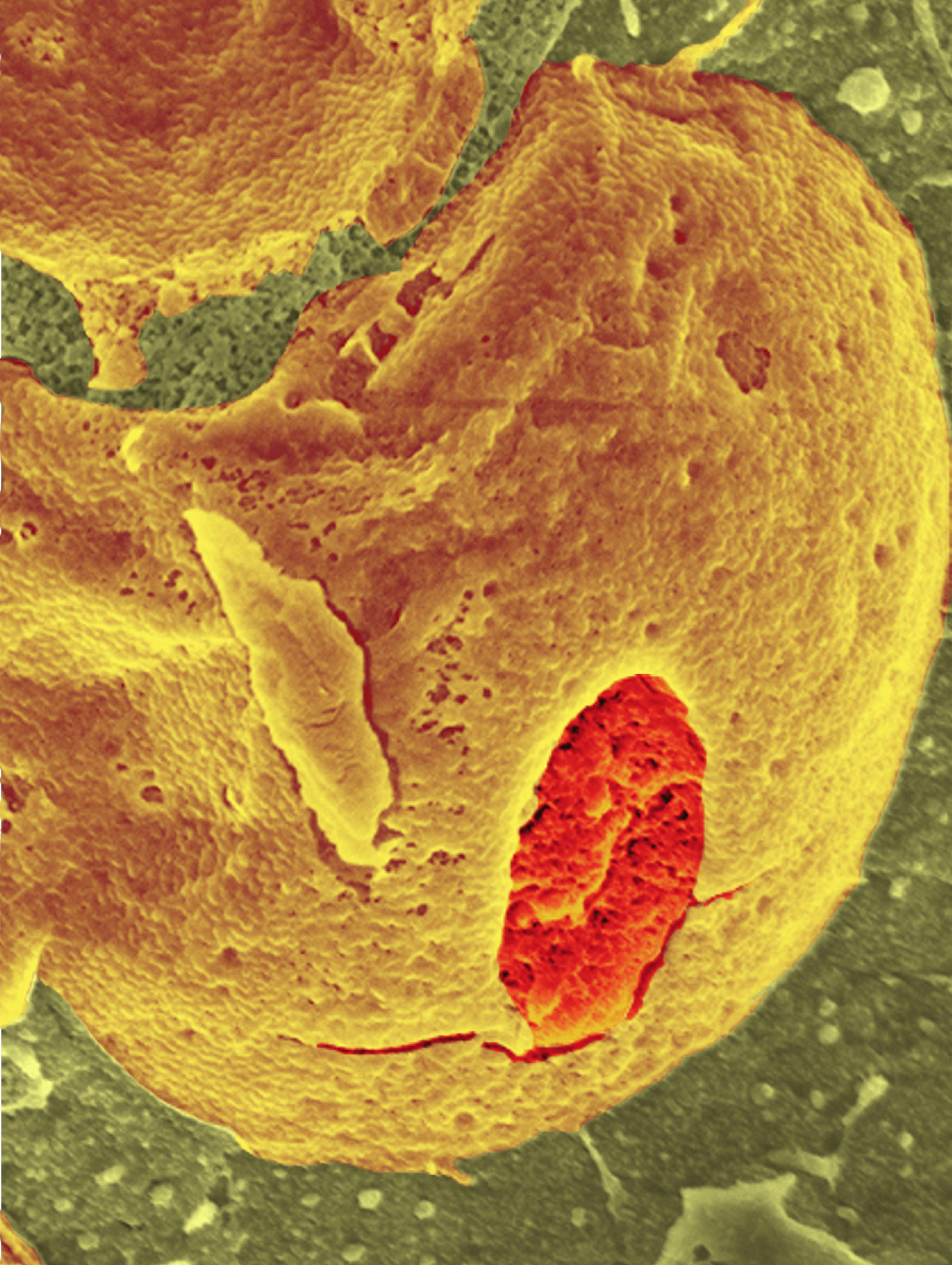
New Northwestern Medicine research has revealed a surprising phenomenon behind the production of red blood cells.
As immature cells differentiate into mature red blood cells, their nuclei and the genetic material inside them – called chromatin – condense, a process that scientists did not fully understand until now.
In a paper published in Developmental Cell, a team led by Peng Ji, MD, PhD, ’13 GME, assistant professor of Pathology, showed that a large opening forms on the nuclear membrane of immature red blood cells, allowing histones – proteins in the chromatin – to release from the nucleus and degrade.
Dr. Ji compares this transient, recurring opening on the nucleus to a volcano on the earth’s surface, with histones pouring out like lava.
“Unexpectedly, major histones, scaffold proteins wrapping genomic DNAs, are partially released from the opening into the cytoplasm,” Dr. Ji said. “We discovered that the nuclear opening is formed by caspase-3, a protein involved in protein cleavage.”
The scientists demonstrated that inhibiting caspase-3 blocks the nuclear opening and likewise stops histone release from the opening and chromatin condensation. Without the protein, cell differentiation is interrupted.

The findings may explain a root of some blood diseases.
“Our study reveals the mechanism of chromatin condensation during red cell development, which may provide clues for the pathogenesis of red cell-related diseases with unknown etiology,” said Dr. Ji, who is also a member of the Robert H. Lurie Comprehensive Cancer Center of Northwestern University. “Our study may also shed light on the possible mechanisms of chromatin condensation in other developmental systems, such as spermatogenesis.”
Cells in the epidermis and the eye’s lens epithelia also undergo chromatin condensation and involve caspase-3 in their differentiation.
“Similar nuclear opening and histone release processes could also occur in these cell types,” said Dr. Ji, suggesting areas for future research.
This study was supported by the American Society for Hematology Scholar Award, NIH Pathway to Independence Award R00HL102154, Chicago Biomedical Consortium Catalyst Award C059 and National Cancer Institute grant U54CA143869.






